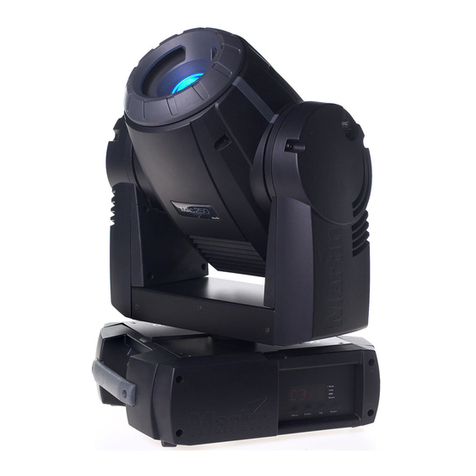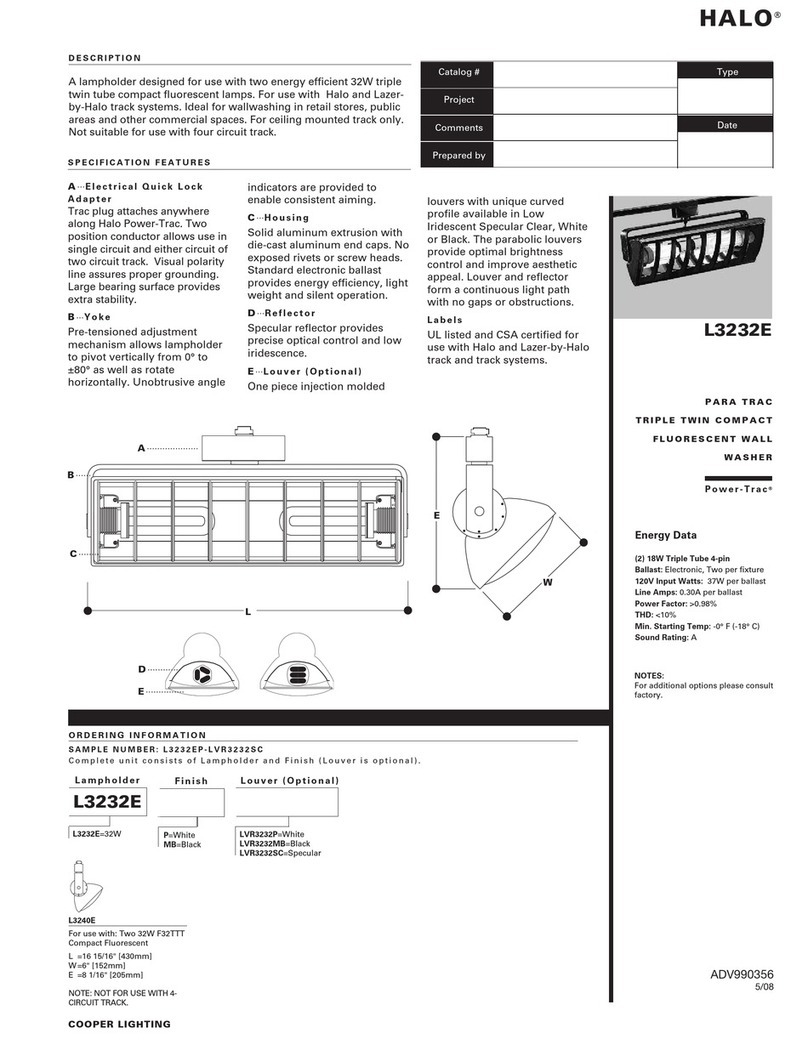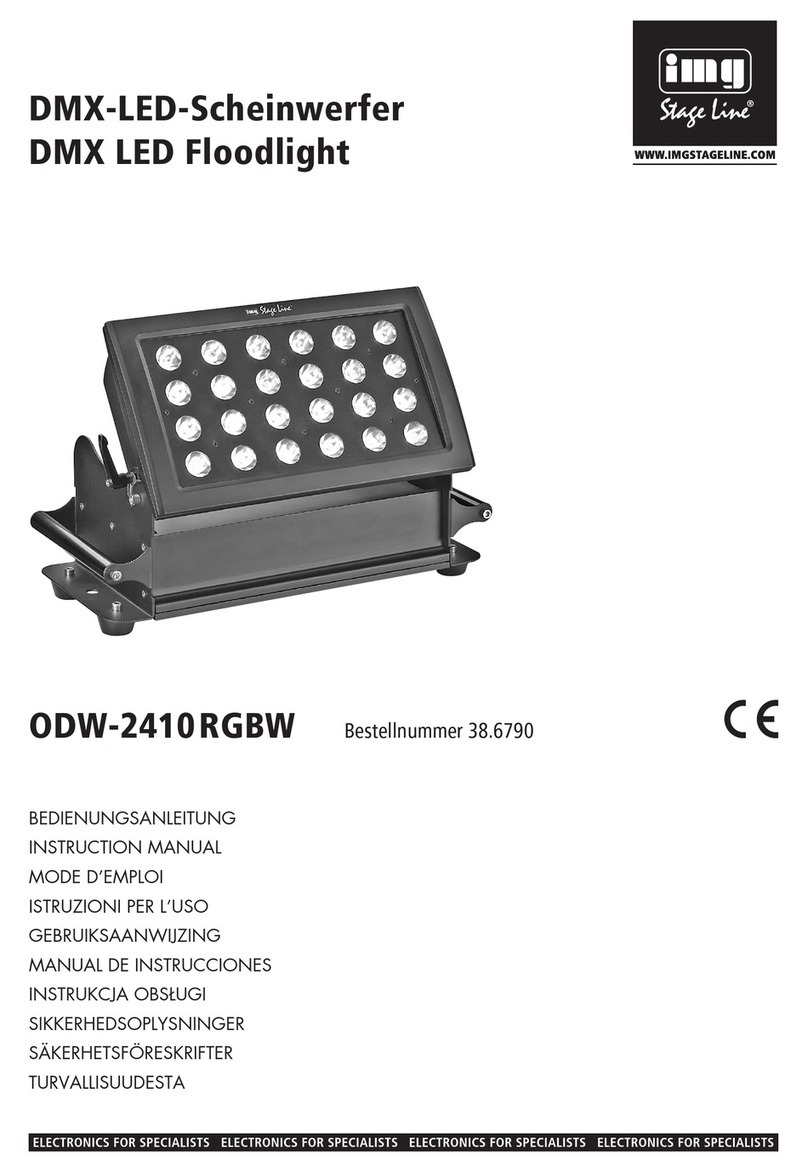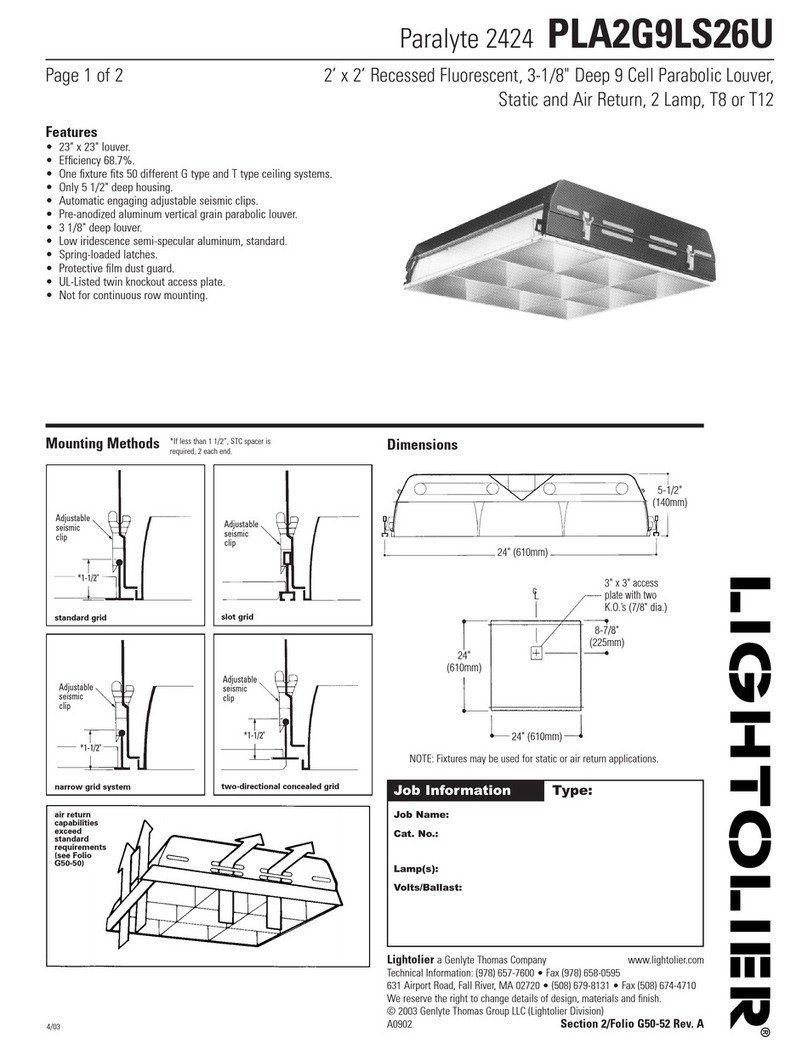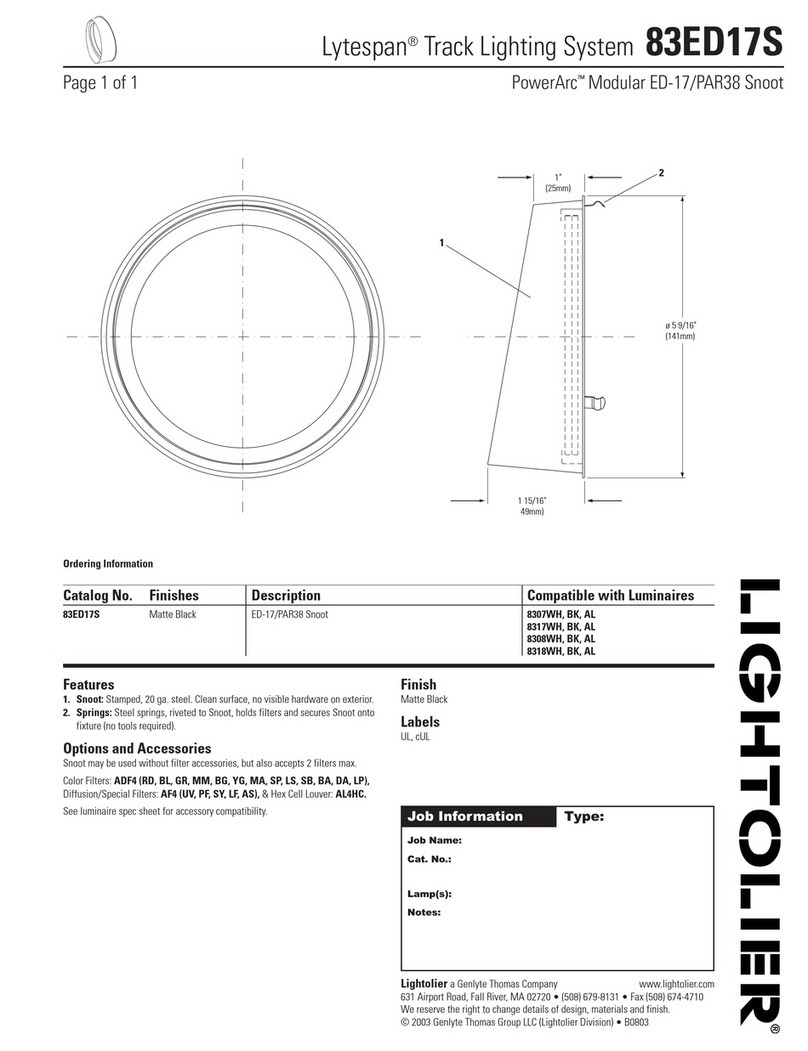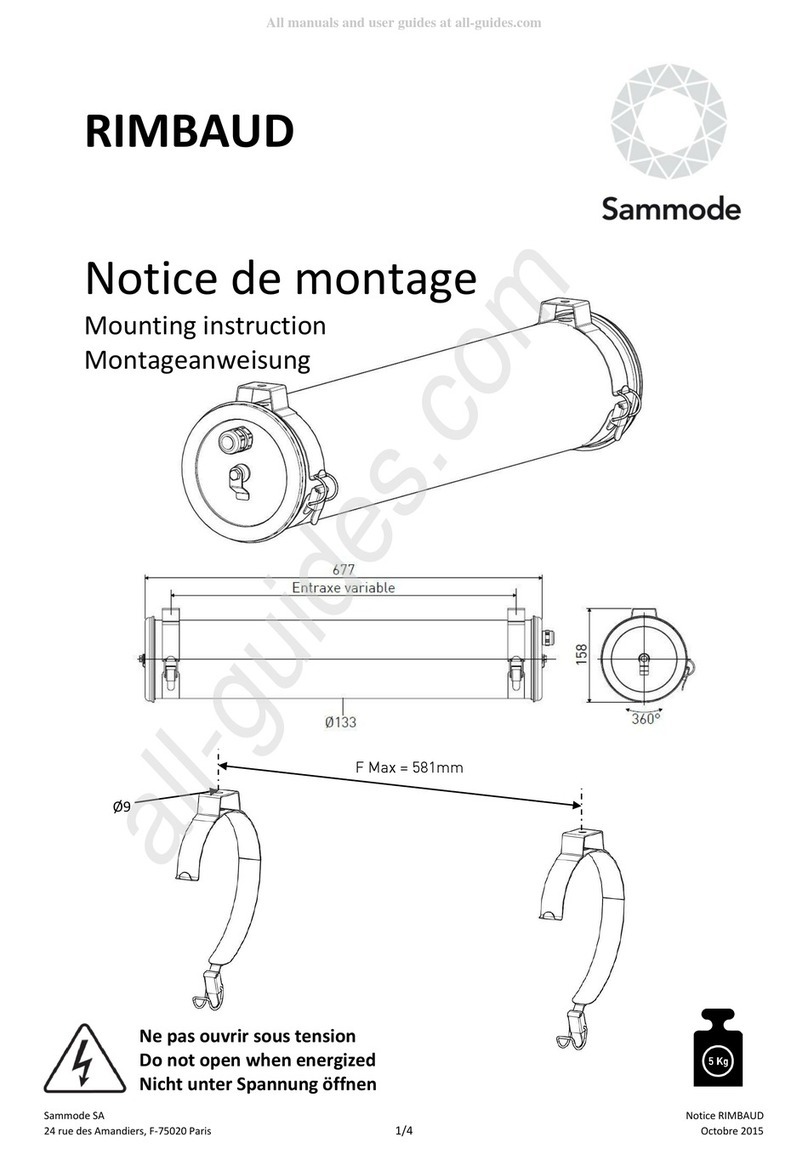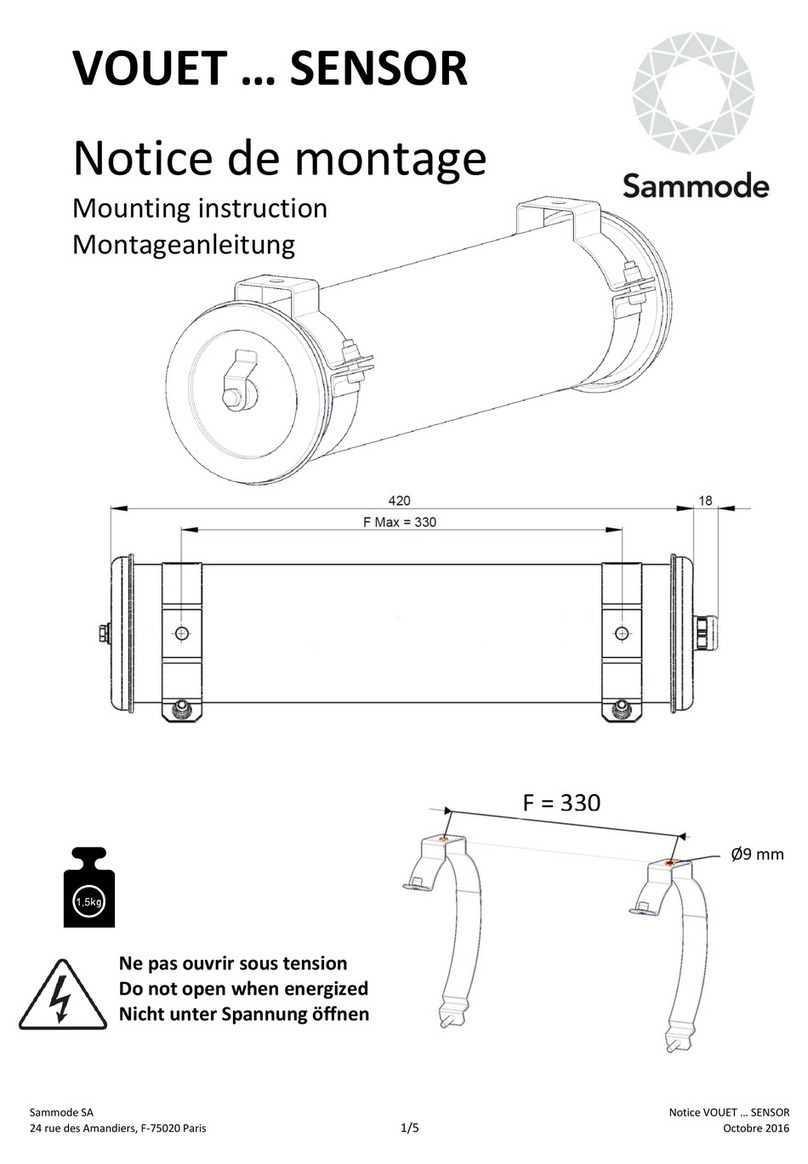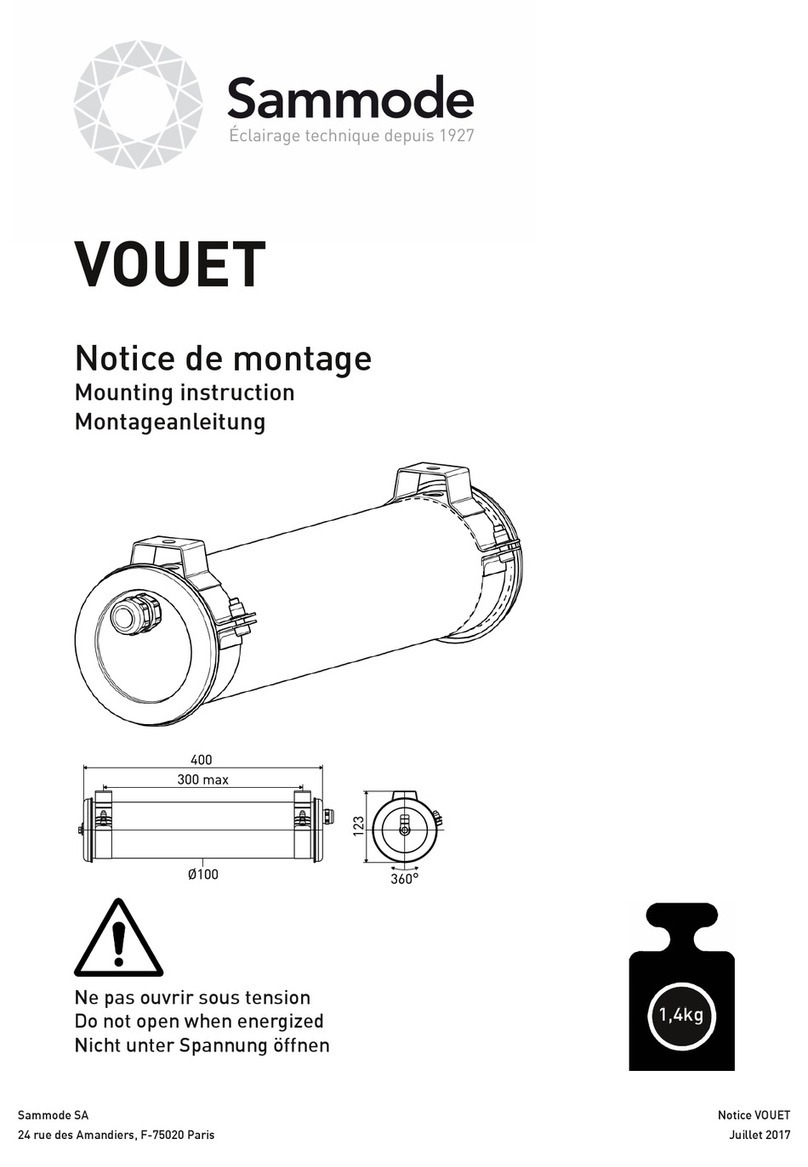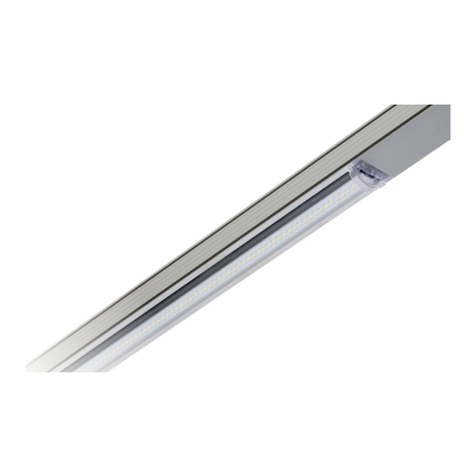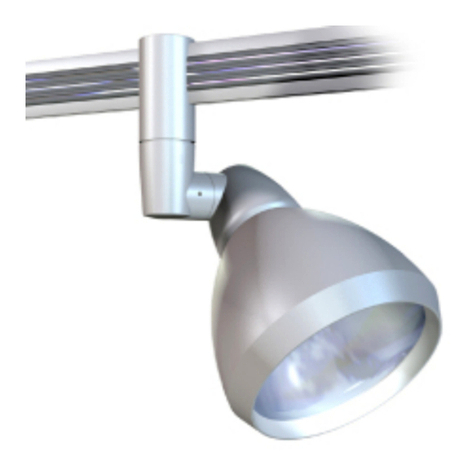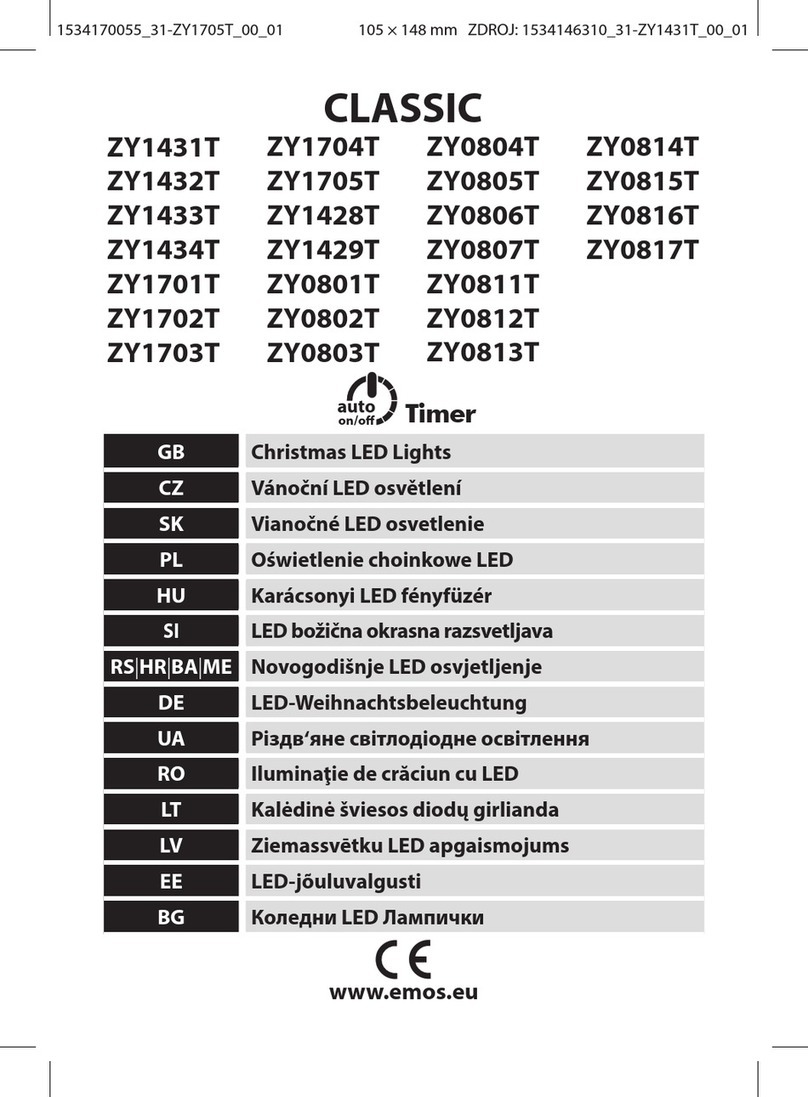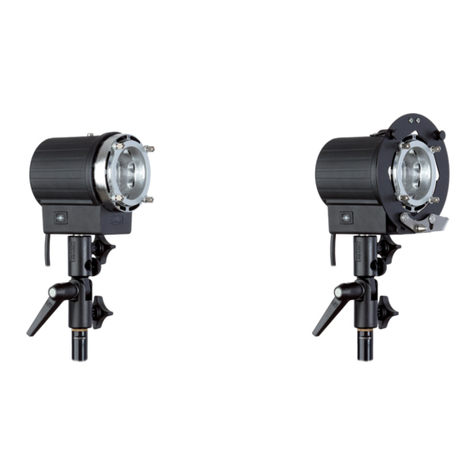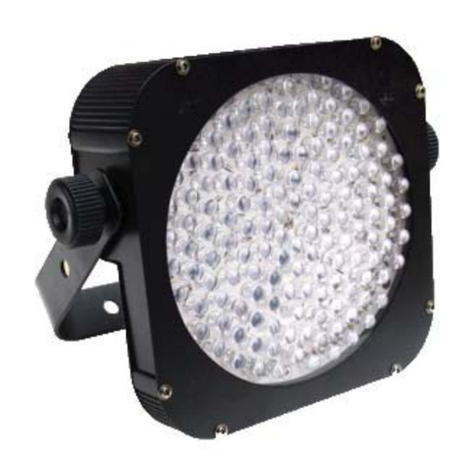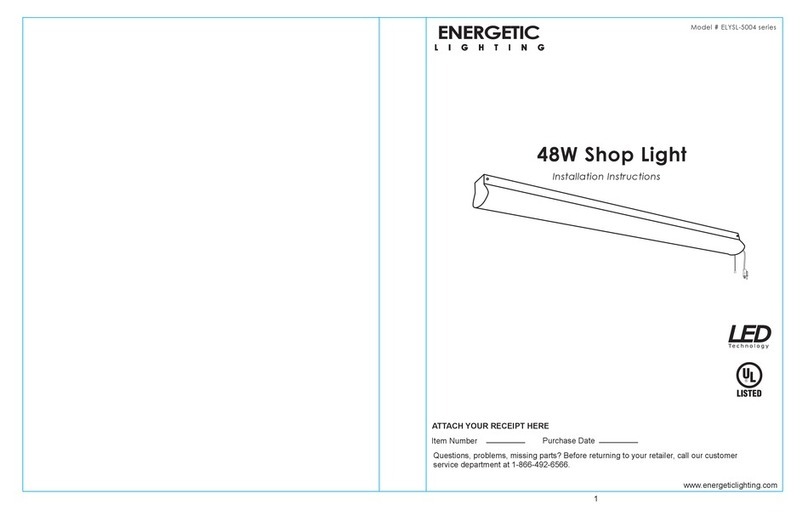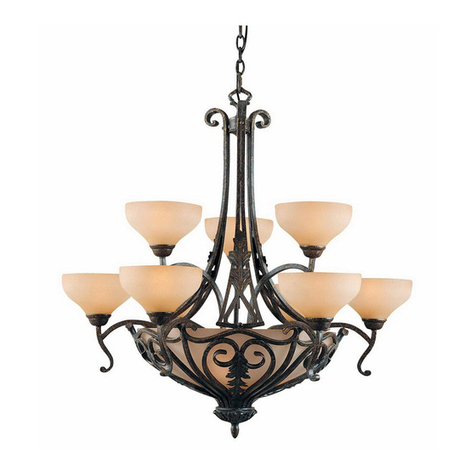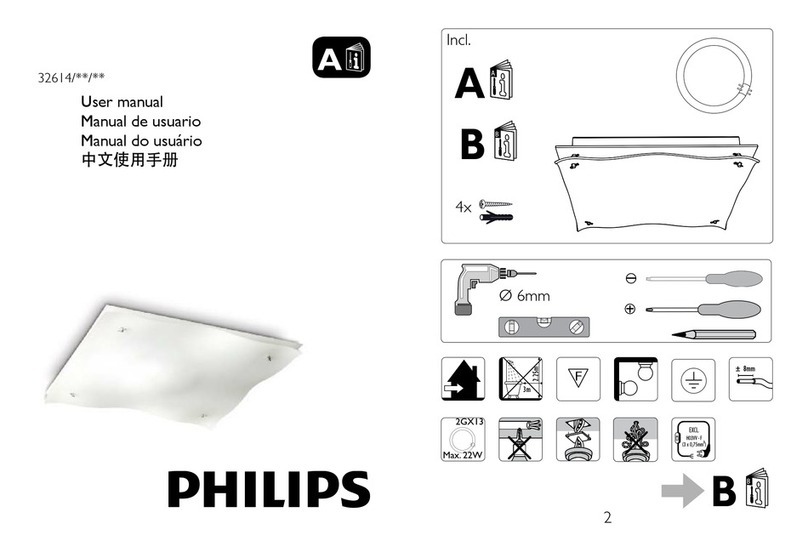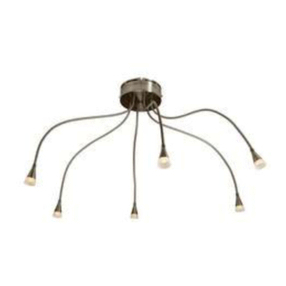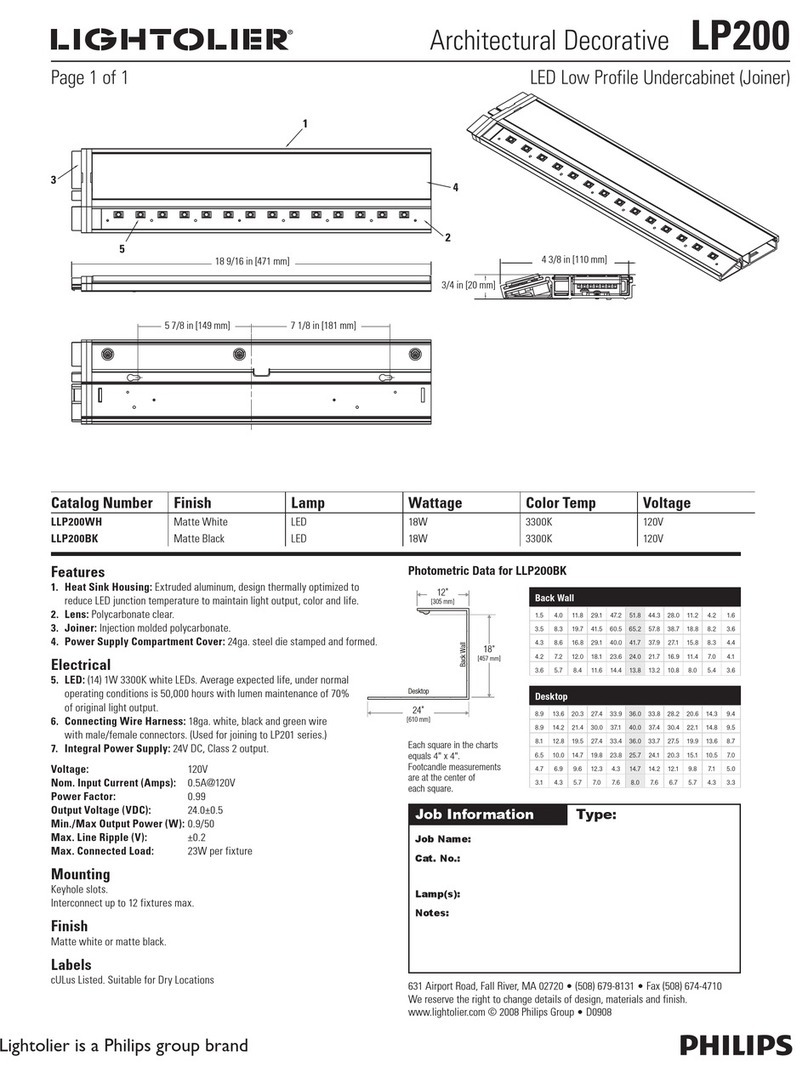without tightening it.
2.3 Connect both live and neutral connectors to the relevant terminals of the block (L and N).
2.4 Connect the earth on the relevant central terminal of the block ( ).
2.5 Lock the closing cover of the connector and lock it with the provided screws.
Important:
-The mains supply of the device must be taken downstream from the protection device and upstream from the control
device for the normal lighting of the room where it is installed.
-To ensure the required tightness, use a round supply cable, for example a U1000 R2V or H 07 RNF 3G1.5² in those
cases (the contractor is responsible for the choice of the cable).
Note:
-As the cable gland supplied with the luminaire is certified ‘Ex eb‘, “Ex tb”, II 2G II 2D, it is strictly forbidden
to replace it with another one.
-In order to provide the tightness required, the cable gland used is designed for one and only one round cable with
an external diameter included between 10 and 12 mm. For the choice of the cable (type and nominal section), in any
situation, the relevant installation documents shall be complied with.
Maintenance (To be carried out by trained and duly approved staff)
The user should make sure that the conditions of use and maintenance are complied with (cleaning, replacement of
lamps, replacement with appropriate fuses, tightening of the various components, etc.).
Sammode cannot be held responsible should these instructions not be complied with.
1 Cleaning:
In order to avoid deposits and accumulations of dust on the surface of the luminaires, the user should clean them
regularly. The most appropriate way to clean them is the use a lukewarm, soapy water solution or water with a soft
household cleaning product, using a soft cloth or sponge to remove the dirt and dust. All the surfaces must then be
rinsed with cold water and dried immediately with a soft cloth to avoid water drop traces.
Do not use any abrasive cleaning agents or cleaning products with high alkaline concentration.
Never scratch the tubular housing with a scraper, a razor blade or any other sharp tools.
For version II 2G: POTENTIAL ELECTROSTATIC CHARGING HAZARD –use only wet cloth or sponge
2 Led module replacement:
Led modules have a lifetime of 50000h, for a normal use. Beyond that period and at the latest if it proves to be faulty,
the led module should be replaced.
3 Driver replacement:
The drivers have a lifetime of 50000h, for a normal use. Beyond that period and at the latest if it proves to be faulty, the
driver should be replaced.
4 Repair of the unit:
The repair of the unit cannot be undertaken without SAMMODE’s prior consent in writing.
Special requirements for a safety use
For shocks, for glass version, the user will have to take into account the fact that the light fitting can bear only a weak
mechanical risk (2J). The user will have to take into account the fact that the light fitting needs to be installed in an
area protected against shock or with an additional protection.

